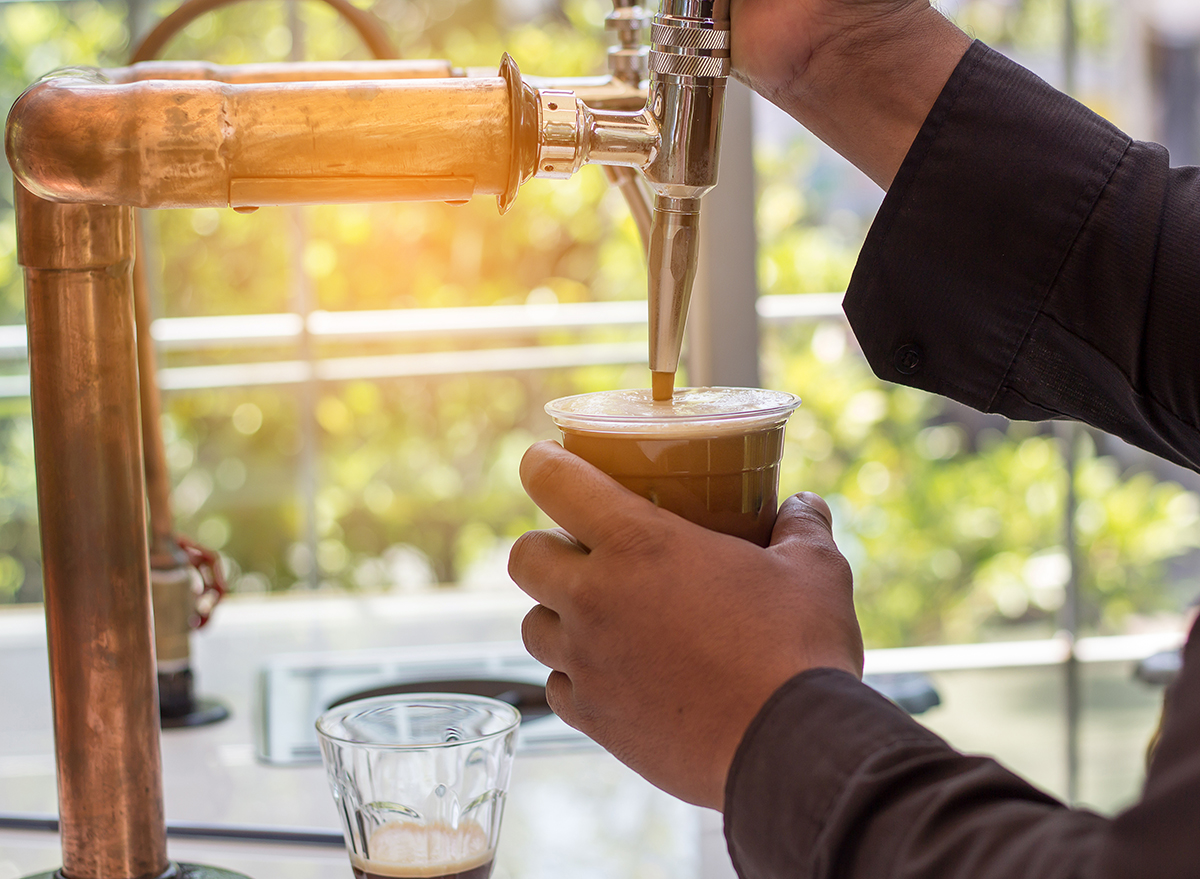What's the Difference Between Nitro Cold Brew, Cold Brew, and Iced Coffee?

There are some people that love coffee, and there are others that just can't stand the taste of it but drink it anyway to satisfy that caffeine craving. The truth is, a piping hot cup of coffee—or an iced one—is an acidic, rather harsh drink, especially for those with sensitive stomachs or who are susceptible to heartburn. Fortunately, there is an alternative to the traditional cool coffee beverage that lacks in acidity, but is instead, loaded in robust flavor and caffeine. Such a drink is called the cold brew, but have you heard of its smoother cousin, nitro cold brew?
We spoke with Scott Van Antwerp, the customer experience associate for Commonwealth Joe Coffee Roasters, a premium specialty coffee roaster and retailer, to help us break down the difference between cold brew, nitro cold brew, and iced coffee.
How is nitro cold brew different from regular cold brew?
At first glance, you might wonder, 'Wait, what is nitro cold brew?' But as Antwerp explains, nitro cold brew and regular cold brew actually follow the same brewing process; it's the way that they're stored upon completion of brewing that differs. See, some cold brew is bottled, whereas other cold brews are placed within a keg.
He says that the cold brew that's in the keg, "can then be infused with nitrogen and put on tap. The resulting nitro cold brew has a smoother [and] thicker body, resembling that of a Guinness."
How does cold brew differ from iced coffee?
They may look similar, but the taste and texture are quite different.
"Cold brew is a stronger, smoother, and less acidic coffee option for the consumer," says Antwerp. This is because cold brew is brewed for much longer (more on that below) and at a lower temperature than iced coffee. Antwerp explains that this process enables cold brew to accumulate a higher concentration of caffeine—up to one and one half or even two times the amount iced coffee contains—in addition to a more robust flavor and lower acidity. You hear that friends with acid reflux? Cold brew varieties may be the best way for you to get that caffeine surge without having to pay the price of a fiery esophagus.
"The brewing process also allows for a longer shelf life, as cold brew can keep the same flavor and strength for weeks to months," he says. Iced coffee, on the other hand, begins to lose its bold flavor after a day or two post-brew. Now that we know the main differences between each type of cold coffee beverage, let's explore how each is made, shall we?
How is cold brew made?
Antwerp says that the process of making cold brew is much longer than that of iced coffee. Cold brew is brewed from coffee grounds that are steeped in cool water for anywhere between 12 and 24 hours in either an environment that's room temperature or cool.
"Once the extraction of the liquid takes place, the coffee is then put into cold storage. By maintaining the cool temperature from start to finish, the cold brew [becomes] much less acidic than iced coffee," he says. The longer brewing process then allows for the beverage to acquire that desirable, high caffeine content and strong flavor.
How does this differ from the way nitro cold brew is made?
To review, nitro cold brew is made the exact same way that regular cold brew is, it's just the delivery of the two beverages that is different.
"Once the brewing has finished and the coffee is kegged, nitrogen is then infused into the cold brew," says Antwerp. He explains that the process of pressurizing the cold brew with nitrogen allows for the body of the coffee drink to come out smoother than a typical cold brew.
It truly looks like your pouring yourself a cold beer as you drain the nitro brew from the keg. It even finishes with a frothy top, just like your favorite beer would.
And finally, what does the brewing process look like for iced coffee?
"Iced coffee is made very similarly to hot coffee," Antwerp explains. "Iced coffee is made by brewing hot coffee at about double strength and pouring over ice. The coffee is [then] brewed at double strength to balance out the melting ice and has a similar caffeine content as a traditional drip coffee."
He says the process only takes about five minutes, depending on the caliber and make of the machine. "By changing from hot to cold so quickly, the coffee becomes far more acidic than that of cold brew. Similar to hot coffee, the resulting shelf life is only a few days."
There you have it folks: You now know the difference between the three stimulating beverages.








